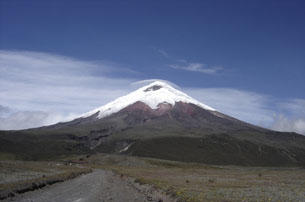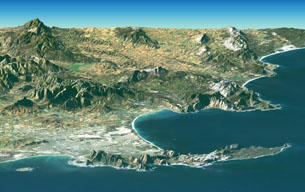Introduction
Cotopaxi stratovolcano, Ecuadorian Andes
Image Credit: MBG
Table Mountain, South Africa
Image Credit: Courtesy by NASA / JPL / NIMA
Mountain building (or mountain formation) is one of the most spectacular but also one of the slowest processes on Earth’s surface. The geodynamic forces acting at plate boundaries and driven by either heat and/or mechanically result in the formation of mountains around the world. Their topography will depend on the material they are composed of and the tectonic, magmatic, metamorphic and climatic conditions, both at the time of their formation and in the millions of years thereafter. These also potentially lead to the concentration of economic minerals.
|
Stress state |
Mountain type |
Energy source |
Type of plate boundary |
|---|---|---|---|
|
compressional |
collisionary |
mechanical |
convergent |
|
loading and compressional |
subduction-related volcanism |
thermal |
convergent |
|
loading |
hot-spot volcanism |
thermal |
unrelated |
|
extensional |
oceanic rift zones |
thermal |
divergent |
|
extensional |
continental rift zones |
mechanical |
divergent |
Table relating stress regime of mountain building, mountain types, energy sources and type of plate boundaries. Source: MBG.



